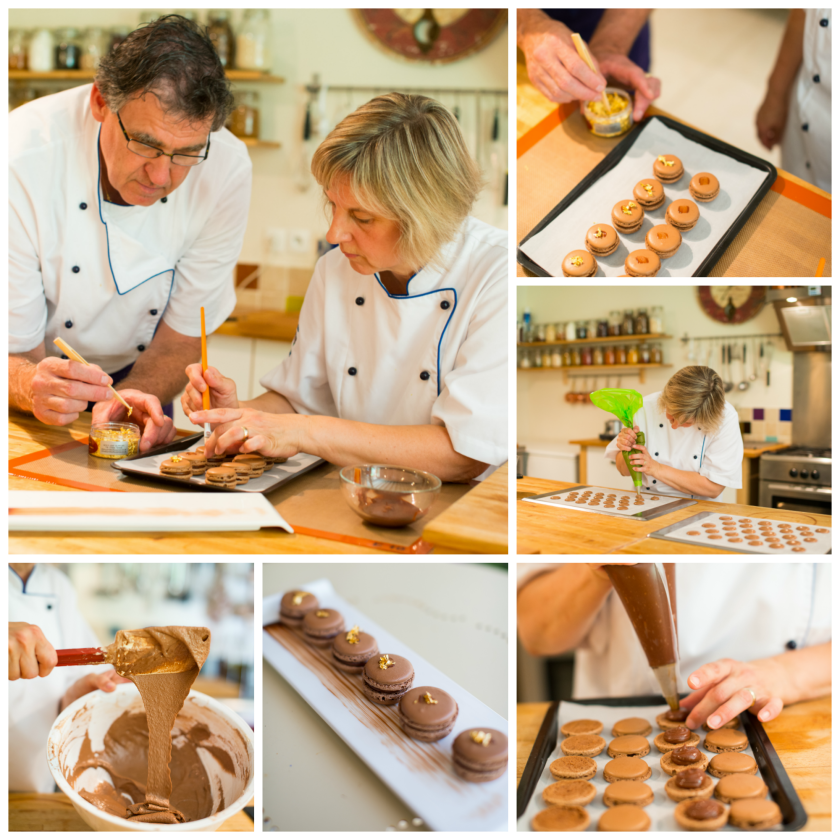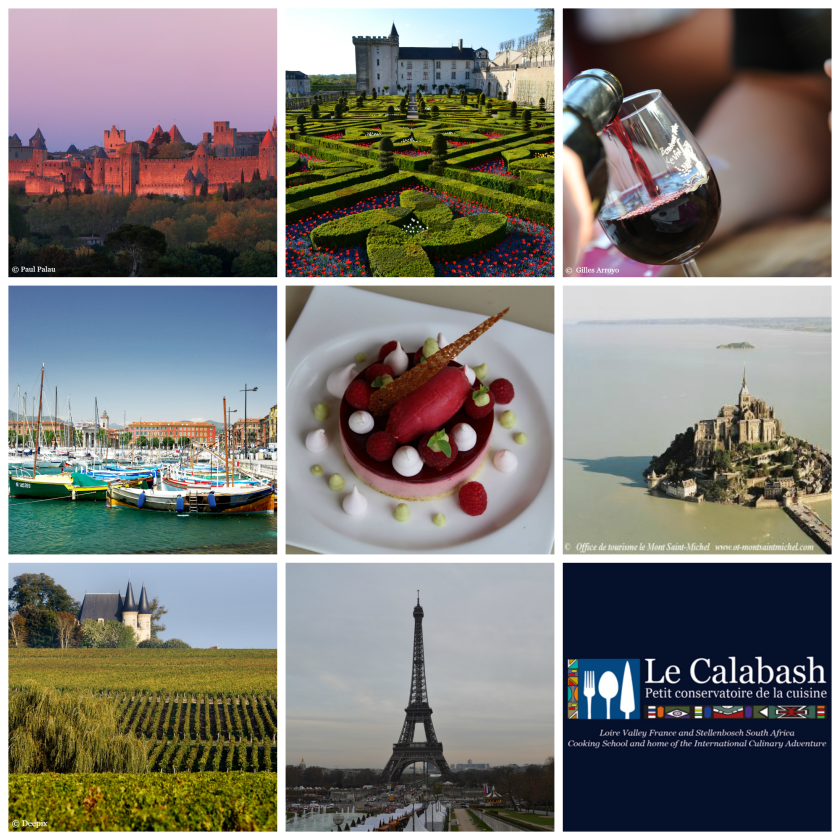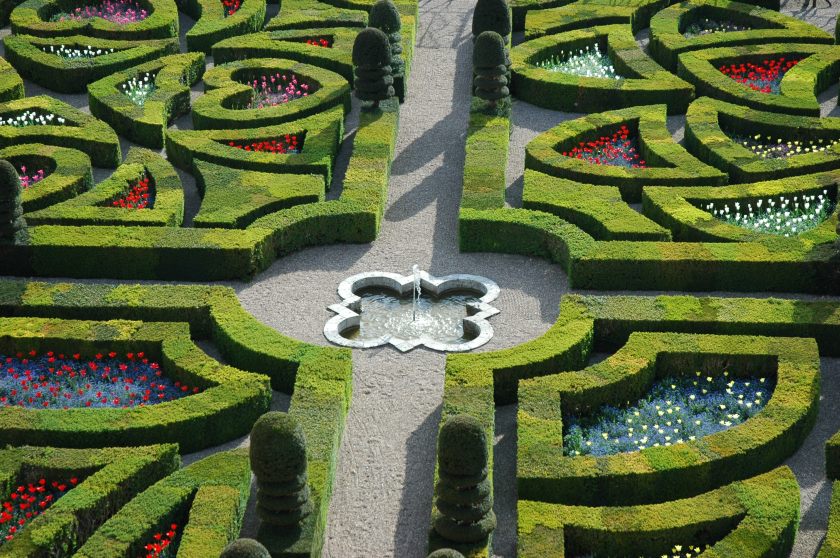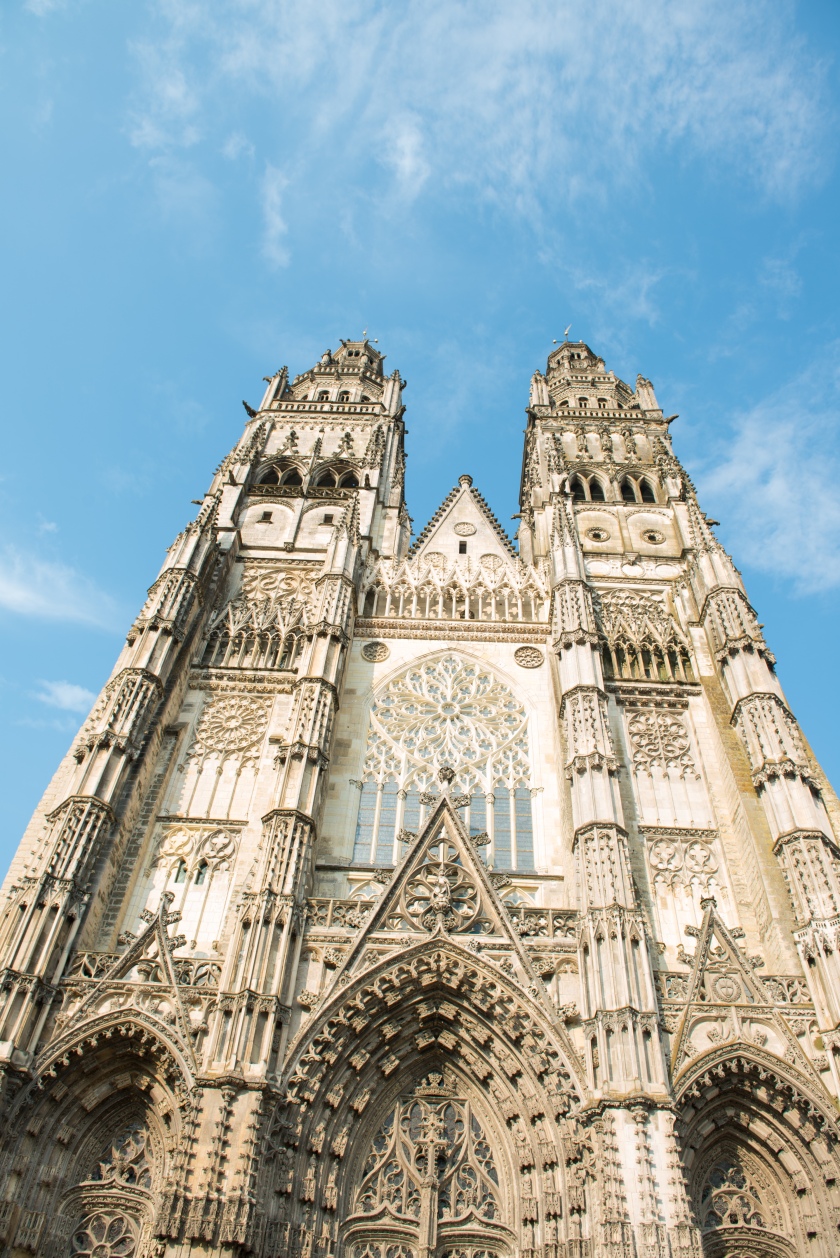
One of the world’s most sought after classics, the Macaron.


On this incredible trip, you will embark on a Culinary and Wildlife experience second to none with two award-winning chefs, Alison and Sidney.
Discover the breath-taking beauty of Cape Town, visit some of the finest wine estates in Stellenbosch, Franschoek and enjoy traditional Cape Malay Cuisine. Experience hands on cooking classes in our new kitchen on the award winning ‘Zevenwacht Wine Estate’ near Cape Town. Home to soaring Table Mountain, golden beaches and bountiful vineyards, Cape Town is sure to capture your heart.

We fly into the wonder of Namibia where we stay at prime wildlife locations at some of the world’s finest game reserves where we will enjoy game drives and have the opportunity to see many of Africa’s incredible animals including, The Big Five. You will track cheetah on foot, cook under the African stars with local chefs and meet local tribes. You will be staying in luxurious lodge accommodation.
If you are eager for an even deeper and exhilarating experience, come on our extended trip and enjoy the additional Fly-In Safari that focuses on the Namib Desert, one of the oldest deserts in the world. This scenic flight in Namibia guarantees to be one of the highlights of your trip ! No part of the desert is more stunning than Sossusvlei, with its monumentally high dunes, their sinuous crests and warm colours changing as the day waxes and wanes. You will be mesmerised by the incredible views.

Chefs Alison and Sidney Bond greeted us with a sparkling wine cocktail of Clermont de Loire with a local cassis as we went through the customary introductions. Nerves were high as strangers stated their names and hometowns. My particular group consisted of students hailing from the United States, Dubai, England, and South Africa.
We then descended into the dining room of the “Old Stable,” where the long wooden table, with enough seating for us plus our hosts, was covered with classic French country dishes ready to introduce us to what Le Calabash had in store over the coming week. With the assistance of locally produced wine, our group became better acquainted as we discussed the dishes and our backgrounds.
Much like everyone in our group, each dish and ingredient came with its own story. The mushrooms were foraged from woods not far from Le Calabash’s hamlet, the St Maure goat cheese was locally produced under the same methods for centuries, and a selection of charcuterie like rillettes and pâtés came from local producers.

One of the changes to the 2016 itinerary is a deeper focus on cooking with seasonal ingredients that can be replicated in our own homes. The lesson begins with a tutorial on butchering and cooking poultry. The French approach cooking poultry as an art, from selecting the proper breed to the final preparation. The outcome of the lesson is Le Calabash’s Gold Medal dish, Chicken Supreme with an Herb Farcé, Confit Leg, Pomme Fondant, and a Jus Roti.

Having attended several similar culinary vacations in the past, I liked how Le Calabash’s lessons covered both proper techniques and specific meal preparation. The takeaway was more than a dish to impress your friends back home, but lessons on how to improve general kitchen skills. For example, you don’t just learn how to cook a bourgignon style turbot with baby onions and a red wine sauce served over wilted spinach, you also learn how to identify whether or not the fish from your market is indeed fresh.

The challenges in the kitchen seem to grow each day, culminating with Alison’s take on the classic le Vacherin. Creating the multi-layered dessert is a team effort and aids in the self-confidence building process and cultural exchange. You’ll find yourselves celebrating successes or laughing if the dish doesn’t turn out quite right like mine did (I don’t do desserts).

While the main focus of a French Culinary Adventure is inside the kitchen, a good portion of the learning takes place in the surrounding region. The Loire Valley is considered the breadbasket of France – a country rich in culinary traditions.
The Loire Valley is home to the finest goat cheeses in the world, France’s second largest truffle region, the country’s largest supplier of fresh water fish, La Géline de Touraine chickens, and the largest wine region of France. Much of that bounty can be seen on the trip to the Tours Farmers Market, one of the finest in France. Other culinary related excursions include a trip to a goat cheese farm and a vineyard in Chinon.
Outside of the culinary related field trips mentioned above, the tour visits a few historic sites. After the market visit in Tours, Sidney then leads the group on a tour of some of the city’s historic sites including the Basilique de St-Martin, a stop on the great pilgrimage route to Santiago de Compostela, and the Cathédrale St-Gatien, where Charles VIII and Anne de Bretagne’s two children are buried.
In addition, you’ll have a chance to visit the Château of Villandry, a world heritage site. The Château is steeped in French history. It’s where King Philip II of France and King Richard I of England brokered a peace deal. It’s also where Napoleon’s brother Jérôme lived during the French Revolution. Today it stands as a beautiful artifact from the past with luscious green gardens that beg exploration.
There is also some downtime scheduled to either relax on the grounds of Château Valcreuse, your accommodations for the trip, or to bike into the nearby village of La Roche Posay. The château offers plenty to do from strolls along the river to a game of boules in the garden or a dip in the sparkling pool, and La Roche Posay boasts a world-renowned spa and plenty of quaint shops to browse.

It’s always a teary-eyed event as students say farewell to new friends and celebrate all they accomplished over the previous week from learning new skills in the kitchen to understanding and experiencing a new way of life. A way of life that is foreign to so many of us in our fast-paced lifestyles but necessary to experience and incorporate into our routines for our well-being.
After the ceremony, the group celebrates one last dinner together at Michelin stared La Promenade Restaurant. As you linger over every last bite of exquisite French cuisine, you’ll look around the room at friendships formed over diverse backgrounds and long for the slow country lifestyle and fine eating to continue forever.

Yes, we may live in a mad world, but the experience of learning through camaraderie and food breaks down those barriers. The immersion into the French way of life and the experience of working with others across diverse cultures teaches you that the world isn’t quite so mad after all. You all of a sudden find comfort in traveling and food. At least this is how I felt when I completed my French Culinary Adventure.
Bryan Richards is a food, travel, and craft beer writer. He has a passion for exploring regional food and drink and enjoys encouraging readers to discover new places and tastes in a way that inspires curiosity and motivation. For more info, please visit The Wandering Gourmand.
Finesse rather than fireworks marks the gastronomy of this gentle, lovely region, known for exceptional white wines, delicate fish, and France’s most bountiful fruits and vegetables. At le Calabash we are always asked, why have you chosen this area to setup ‘le Calabash’ and our answer is simply, it is Europe’s most unspoilt, undiscovered and fastest moving Culinary Destination. Putting aside some of the most beautiful countryside, architecture and history, we have so much to offer the Culinary Adventurer. The Loire boasts of the finest wines and sparkling wines in the world. Truffle and Saffron production is on an astronomic increase. Poultry, Pork, Beef and now Lamb is of the best in Europe. As the Loire valley borders the Atlantic, we have some of the finest Oysters and Mussels to be found on the continent. The Loire Valley is known as France’s Bread Basket, and this is evident throughout the year with wonderful Asparagus, Berries, Fruit, Vegetables and our Cheese Production is second to none.

What we have to offer our guests is an opportunity to enjoy and experience cooking in a Culinary environment second to none !
COMING SOON! A Culinary Tour of France with le Calabash.
Le Calabash takes you on an exclusive Culinary Adventure through France’s finest food, wine and cultural regions. Come and enjoy a second to none gourmet experience, learning skills and techniques through hands on cooking classes with award winning chefs and visits to the markets.

Indulge in classic French cuisine and dine at Michelin-star restaurants. Discover wine estates, taste some of France’s most celebrated wines and sample regional specialities. Experience many of France’s most well-known attractions including le Mont Saint Michel, the Eiffel Tower, les Châteaux de la Loire, the Medieval town of Carcassonne and top cities such as Bordeaux, Nice, Paris, Bayeux, Lyon… To include dining at le Train Bleu, Paul Bocuse, Gordon Ramsay, the Old Stable.
A journey through France that will leave you with many special memories.
In our new French Culinary Adventure le Calabash take you to the stunning Château of Villandry, the last of the great Châteaux of the Loire built during the Renaissance. The sober elegance of its architecture combined with the charm of its outstanding gardens make this one of the Jewels of World Heritage.

The lands where an ancient fortress once stood were known as Colombier until the 17th century. Acquired in the early 16th century by Jean Le Breton, France’s Controller-General for War under King Francis I, a new château was constructed around the original 14th-century keep where King Philip II of France once met Richard I of England to discuss peace.
During the French Revolution the property was confiscated and in the early 19th century, Emperor Napoleon acquired it for his brother Jérôme Bonaparte.

Its famous Renaissance gardens include a water garden, ornamental flower gardens, and vegetable gardens. The gardens are laid out in formal patterns created with low box hedges. In 1934, Château de Villandry was designated a Monument historique. Like all the other Châteaux of the Loire Valley, it is a World Heritage Site.

On a Culinary Adventure with le Calabash we visit the beautiful historic city of Tours where you will explore both the indoor ‘Les Halles’ food market and the twice weekly outdoor market, you will amazed by all the incredible fresh and local products.


We visit the old town which clusters around place Plumereau; its old houses restored to their former glory. Today this is the place for pavement cafes and people watching in the summer. Stroll the smaller, narrow streets like rue Briçonnet and you step back into the historic medieval city. To the south you’ll find a Romanesque basilica, the Cloitre de St-Martin and the new Basilique de St-Martin. You’re in the place which was once on the great pilgrimage route to Santiago de Compostela. St-Martin was a soldier who became bishop of Tours in the 4th century and helped spread Christianity through France. His remains, rediscovered in 1860, are now in the crypt of the new Basilique.

The other old part, the cathedral quarter, on the other side of the main Rue Nationale, is dominated by the Cathédrale St-Gatien, a flamboyant Gothic building with 12th-century decorated stonework covering the outside. Inside the highlights are the 16th-century tomb of Charles VIII and Anne de Bretagne’s two children, and the stunning stained glass.


The queen of spices took time to introduce itself to the French culinary scene. Then it was able, thanks to its lemony flavour and camphor, to attract chefs, pastry chefs and chocolatiers who have learned to manipulate its presence to tame its potential to overpower.
Origin
Both genera are native to India, the largest producer until the late 20th century.
The German coffee planter Oscar Majus Kloeffer introduced Indian cardamom to cultivation in Guatemala before World War I and by 2000 that country had become the biggest producer and exporter of cardamom in the world, followed by India. Some other countries, such as Sri Lanka, have also begun to cultivate it.
Elettaria pods are light green, while Amomum pods are larger and dark brown.
It is the world’s third-most expensive spice, surpassed in price per weight only by vanilla and saffron.
Known for thousands of years as a perfume and a medicinal plant, it was quickly used in cooking, particularly in pain d’épices from the twelfth century. It is the star of Indian and Asian cuisines, but it is also very popular in Africa and in Northern Europe, where it was discovered by the Vikings.
Finns, Norwegians and Swedes who use it in cured meats, pastries and hot drinks. In France, it was used for a long time in teas and infusions, but chefs and pastry chefs, thanks to their travels, integrate it more and more into savoury and sweet dishes.
Taste
The taste varies depending on the type of cardamom. The green one is considered as the most perfumed, is both peppery and lemony, and one to two capsules are sufficient to flavour a dish for four to six people. The black cardamom, named “grand cardamom” leans towards camphor and has a very strong flavour.
The white cardamom, obtained by the bleaching of the green, reveals a flavour of pine sap.
However, all of them bring an abundance of freshness into a dish.
The ‘le Calabash’ approach to working with Cardamom
Both Alison and Sidney use cardamom when they have the inspiration to introduce an Eastern flair into the dish they are creating. Alison believes that chocolate and cardamom is a marriage made in heaven and her Madagascan chocolate and Cardamom Macaron is an all-time favourite with ‘le Calabash’s’ French clientele.
Sidney, who grew up in Kwa-Zulu Natal says that he has known the cardamom from a young age and that each and every time he works with it, that it takes him back to his childhood and the flavours of a Durban Indian Curry.
In powder, cardamom loses its perfume quickly and given its expensive price, it is a shame to use it this way.
The seeds in the capsules must be used carefully to gain more taste. Roast them slightly in a pan or crush them before cooking them. For a long time, cardamom was used in shortbreads, madeleines, muffins, brioches, cakes and crumbles and also go well with pears, apples and citrus.
In the school, cardamom perfumes many pastries like panna cotta, macarons, flans, eclairs and is especially effective in flavouring lemon and chocolate cakes. Red fruits, cardamom and chocolate are a perfect marriage.
Take a ‘Walk on the Wild Side’ and explore working with this exotic spice in your kitchen more often.
It’s funny how a bowl of fried mopane worms can make a dinner table full of adults giggle like schoolchildren. As the bowl passed around the table at Xwama, a restaurant in Windhoek, Namibia featuring traditional dishes, taunts of “you eat one” were followed by retorts of “no, you eat one.” It seemed like everyone had succumbed to playground antics of daring one another to stick their tongues on a metal flagpole. I think that I even heard a, “I double dog dare you…”
When the bowl finally made its way to me, there was no hesitation. No taunt was necessary. I quickly popped one of the worms into my mouth and bit down. It was crunchy, chewy, and spicy all at once. While this was by far the most outlandish thing that we ate on our African Culinary Adventure with Le Calabash, it highlighted why we had chosen more of a food focused vacation for our African odyssey. We desired a tour that offered not only safari related activities but also a cultural experience.

Majestic in the best word I can think of to describe the vineyards surrounding Cape Town, which is where we spent the first three nights of our African Culinary Adventure. I couldn’t help but to pass countless hours on our hotel room terrace at Zevenwacht Wine Estate looking out at the lush, green vineyards as they rolled up to the faded mountains in the distance and onto the bright blue sky. I find a peace in vineyards much like others find peace through the crashing ocean surf. Of course, a glass of Cape Town’s famed Pinotage does help to achieve that sense of nirvana…

The natural abundance of the fair cape and the various cultures that influence her have cultivated a cuisine that is both diverse and world class. Chefs Sidney and Alison Bond who lead the tour make sure that you try it all from the welcome dinner of a traditional South African Braai to classic French and Dutch cuisines found in Franschhoek.
The tour also includes stops at some of Cape Town’s top attractions like Table Mountain and the V&A Waterfront. There are also plenty of winery visits along the way to sample the best of the growing viticulture region.

Words can’t describe the experience of a safari, which is why once you go on one you know it won’t be your last. From the first giraffe you spot on the ride to Etosha National Park to the pride of lions stalking their prey, you develop a deep-rooted addiction to see and experience more. A favorite experience was watching a pack of over fifty elephants descend upon a watering hole. We watched for over an hour as both children and adults alike splashed in their afternoon refreshment.

An African Culinary Adventure also visits the Africat Foundation. Africat’s mission is to “strive towards the long term survival of Namibia’s predators in their natural habitat.” Here, you’ll get so see some of the harder to spot big cats like cheetahs and leopards as they are rehabilitated for release back into the wild.

All the excitement works up an appetite that finishes in a lesson on how to cook wild game. It’s the perfect conclusion to an African Culinary Adventure and the journey of a lifetime.
Bryan Richards is a food, travel, and craft beer writer. He has a passion for exploring regional food and drink and enjoys encouraging readers to discover new places and tastes in a way that inspires curiosity and motivation. For more info, please visit The Wandering Gourmand.
2. Add the meringue to the bowl of icing sugar and ground almonds, stir and then folded in the chocolate.
3. Mix well with a spatula, then work on the mixture with your spatula (macaronner) moving your spatula in small circles and going back and forwards to press out the oxygen from the whites. Do this for no more than a few minutes until you have a smooth mixture. The result should form a soft and brilliant mixture that forms a “ribbon” on the surface.
4. Transfer the mixture to a piping bag with a plain nozzle – No. 7. Pipe out the desired size of rounds pressing the nozzle down on the paper then finishing off with a flourish to obtain a nice round and leaving a space between each round as they do spread out.
5. Bake in the centre of the oven for 12 minutes, opening the oven twice at 8 and 10 mins to let out the steam.When ready leave on the baking tray until cool and then peel or scrape them off carefully with a palette knife.Marry up the discs in pairs one row flat side down and one row flat side up.